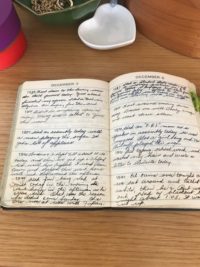
Taking stock of one’s roots can be much more than a hobby or pastime. Thanks to multiple resources for genealogical research, it is possible today to trace ancestry, connect with distant relations, and explore your own identity.
For decades, I have been the owner of boxes and drawers full of family photos. They range from formal portraits of elders and ancestors, taken from the late 1800s to the turn of the century, to mid-century snapshots of my early nuclear family, circa 1940s through 1960s. Due to faulty color film and sticky photo albums of the 1970s and ‘80s, many of the photos of my own children, unfortunately, are damaged and fading.
Hundreds of contemporary photos, taken or shared on my i-Phone, are shared and stored in the cloud, rather than in print form. This also leads me to wonder about their future. What format might they one day be in? Will they be viewable by future generations, and if so, how?
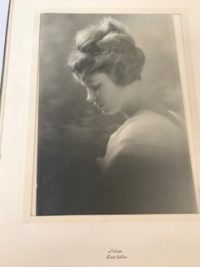
Further, what will happen to the many family photos, or photos of landscapes that have dramatically changed over time, that have been put in my trust for several decades? How should I organize and archive them? At present, a scrapbook assembled during World War II may well reside in a drawer or box next to a formal turn of the century portrait of a great grandparent, or be surrounded by snapshots of generations of family vacations.
Despite being a librarian by profession, there is a part of me that finds those random discoveries to be of greater interest than if the photos were neatly arranged in photo boxes, organized by subject or date. Perhaps, more to the point, will anyone beyond me even care about these old photos?
Recently, I spent some time poking around among these family relics. A late summer reunion with cousins provided a perfect opportunity to explore our common roots, as depicted by family photos, as well as photos from the other side of my family.
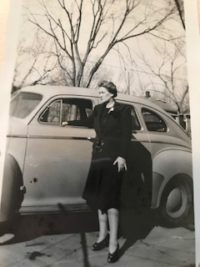
Eight of us cousins met last month in beautiful Vail, Colorado, along with our spouses. A ninth cousin joined us one evening via Skype. This tradition of bi-yearly cousins’ reunions started about fifteen years ago, following many years of being out of touch with one another.
Over the years, we have traveled to Western, Central and Eastern Washington; to San Francisco, Lake Tahoe and Monterey, California; and to Lake Muskoka, Canada. Each of these family gatherings has led to stronger bonds among us, as well as greater self-awareness of our common roots originating in the Pacific Northwest.
So back to the family photos. From a selection that I shared with the cousins, I was surprised to find that many had not seen these particular photos before. Representations from our collective childhoods, when our own parents were a full generation younger than we are today, were especially popular. I came away with the promise that I would make copies of some of the favorites. Perhaps at least some of the photos might live on more broadly than I had previously anticipated.
On the paternal side of my family, I have no cousins with whom to share common roots or memories. My father was an only child, who lost his father at an early age. I have many photos of him as a boy and young man, as well as photos of my twice-widowed grandmother and her mother and siblings – photos that depict another time and place. How does one preserve these memories and moments, hopefully of interest to future generations?
Throughout my years working at the San Francisco Public Library, I often consulted with the San Francisco History Center about library or city history. Thus, in my quest for a future home for memorabilia associated with my paternal grandmother, my first thought was of the local public library of Fort Collins, Colorado, a university town where she lived much of her adult life.
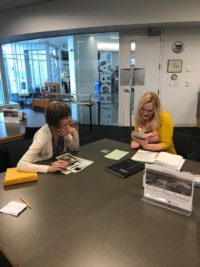
The archives in Fort Collins, although originally housed in the public library, are currently located in the Fort Collins Museum of Discovery. I met with the head archivist, a lovely young woman, who happily accepted my photos and memorabilia, including my father’s 1937 high school yearbook. Her personally led tour of the archives convinced me that this was an appropriate home for additional photos and memorabilia, where they will be preserved in acid free folders and boxes, hopefully of use to future generations.
Finding the right home for memorabilia can be a challenge in our mobile society. Few of us are associated with a single city, town or even state for an entire lifetime. But thanks to today’s digital technology, the location of an archive is perhaps less important than its accessibility.
I like to think that some future or current family member, seeking to learn more about his or her roots, might someday seek out the Clara Maybelle (Lewis) (Graham) Lalor archive at the Fort Collins Discovery Museum. But if not, hopefully that archive will add to the store of history about a once small agricultural town and college.
In the coming years, I hope to sort, label, and date those many photos, letters and other memorabilia that still exist in drawers and boxes. Next task: to find appropriate, yet accessible homes for those items worth preserving. If you are seeking the same, I suggest that you start with the local history museum or public library.

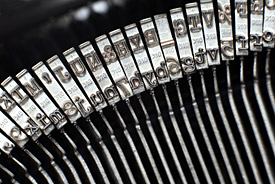
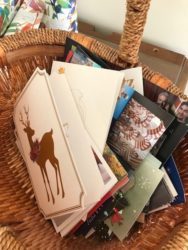
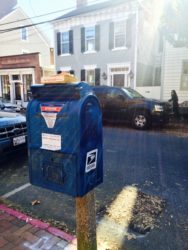

Susan Goldstein
4 Oct 2018I’m glad you found the right archives!
Susan G.